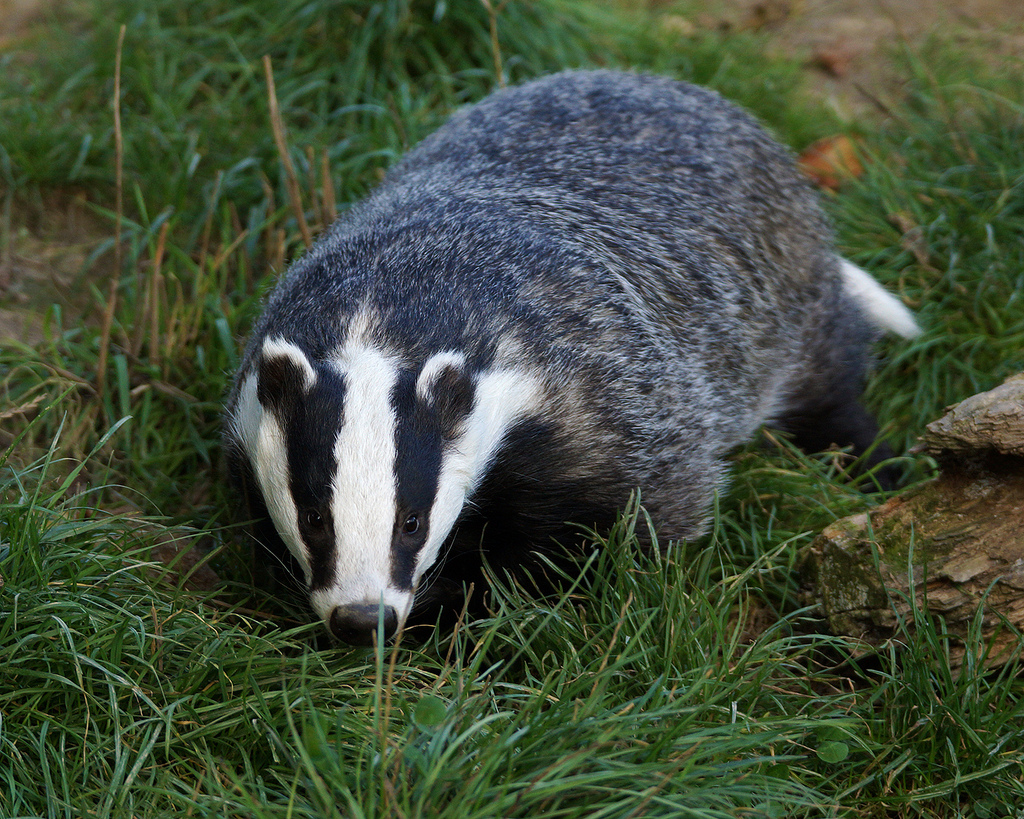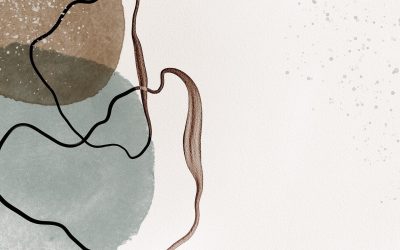Why are Government culling badgers for the sake of bovine Tuberculosis? How does badger culling affect badger and disease mobility across the country? Jess Phoenix, PhD student at Lancaster, tries to answer these questions in this blog post.
My PhD focuses upon the endemic disease of bovine Tuberculosis (bTB) that is having detrimental effects on the British beef and dairy industry. In recent years, the scientific controversy surrounding the link made between bTB and badger activity has gained substantial public momentum due to the implementation of badger culls in South West England. Management of the disease is currently hot in the press due to the proposed extension of badger culls this summer. I will not attempt to suggest whether we should be culling badgers, but will rather present different viewpoints regarding the impact of culling on badger mobility. Over the last four months, I have been working with vets and farmers in North West England and draw upon much of their knowledge in this blog post. This may seem to provide a rather one sided post about badger mobility, however I specifically do this to share the viewpoints of those who are widely unheard in the scientific debate regarding badger movement. As you are probably now aware, this blog post significantly differs from most mobilities research!
The number of herds with bTB and the geographic spread of bTB throughout England has dramatically increased over the last 30 years.
First, a quick introduction to the disease and the culling policy. bTB is a highly infectious, zoonotic, bacterial disease that is rife within the English cattle population. In 2014, bTB cost Great Britain in excess of £80 million and over 23,000 cattle were slaughtered. The number of herds with bTB and the geographic spread of bTB throughout England has dramatically increased over the last 30 years. The disease is now endemic (pdf) within the South West and central parts of England, and the pattern of spread shows an expanding core area with outlying foci. Multiple cattle based control mechanisms have been implemented in attempts to reduce infection rates, however bTB continues to spread throughout England. Many politicians, farmers and scientists do not think the disease can be eliminated by focusing on cattle movement alone. In 1971, it became apparent that badgers were carrying bTB and suffer from the disease. Since then, badgers have been a focus of political discussions to combat the incidence of bTB.
In 2014, the government created the ‘Strategy for Achieving Officially Bovine Tuberculosis Free Status for England’ (pdf) to address cattle-to-cattle transmission, cattle-to-badger transmission, and badger-to-cattle transmission of the disease. In response to broad geographic disease incidence, the strategy is split into three management zones with varying control measures: high risk, edge and low risk. The badger cull is one of the main strategies for the high risk area, “to halt and then reverse the increasing prevalence of bTB by addressing the disease in cattle and in badgers”. Two pilot culls were implemented in 2013 and 2014 in Somerset and Gloucestershire, extended to three pilot culls in 2015 with the inclusion of Dorset. In February, Natural England announced that 29 new areas have submitted an expression of interest for culling licences in 2016.
The badger culls were proposed as pilot studies, which if deemed safe, humane and effective in removing 70% of the badger population, may be extended across the high risk area to make England bTB free in 25 years. However, the badger culls have proven to be highly controversial, sparking much debate and public action.
The badger culls have proven to be highly controversial, sparking much debate and public action.
Studies undertaken in the last 40 years have provided evidence for and against various methods of badger culling, whereby each method is evaluated against its effectiveness to reduce the rate of bTB in cattle. Conflicting outcomes of culling in scientific trials are related to the social perturbation of badgers due to badger ecology and population dynamics. Field studies imply that culling badgers may result in perturbation, defined as the increased migration of badgers into culled areas due to the disruption of territoriality, increased ranging and mixing between social groups.
In 1998, the Independent Scientific Group (ISG) began a large field trial to analyse the effectiveness of culling badgers in areas with high rates of bTB. The Randomised Badger Culling Trial (RBCT) (pdf) ran for ten years culling approximately 8,900 badgers by cage trapping and shooting at a cost of £50 million. The trial had ten zones, each with three areas; one area was subject to annual culling (proactive culling), another area was subject to culling “locally on and near farmland where recent outbreaks of TB had occurred in cattle” (reactive culling), and the final area was subject to no culling. Reactive culling was suspended in 2003 as it was associated with a 20% increase in cattle TB incidence.
In the cull period, there was a 23% reduction in the number of cattle bTB breakdowns in proactive cull areas, but a 25% increase in breakdowns in a 2km wide zone surrounding the edge of the cull area due to perturbation (Independent Scientific Group, 2007). In their final report, the ISG concluded (pdf) that “badger culling can make no meaningful contribution to cattle TB control […] some policies […] are likely to make matters worse rather than better”. Controversially, the chief scientific advisor Sir David King reinterpreted the data in a report released one month later suggesting that “removal of badgers should take place alongside the continued application of controls on cattle”. The different conclusions drawn from the same data led many people to lose confidence in the findings. Additionally, the cause of perturbation is hotly disputed by many vets and farmers who disagree with the ISGs conclusion.
Some people consider perturbation to be a phenomenon created by activists who moved badgers out of the cull zone.
Some people consider perturbation to be a phenomenon created by activists who moved badgers out of the cull zone. DEFRA revealed (pdf) that 3.8% of all traps laid in the RBCT were interfered with or stolen. One vet I worked with, Paul*, thought that the badgers in these traps were moved out of the cull area by activists, and let free on the edge of the cull zone; Paul didn’t think the activists would have travelled far with a badger in a trap due to the high police presence. Paul supported his hypothesis with data on percentage change (pdf) in herd TB incidence post-RBCT cull. Data collected inside adjoining land 36 months post-cull show a general stabilisation of bTB similar to pre-cull levels, hence Paul considered that perturbation was a short term effect of culling.
Additionally, the effects of perturbation were found at a 95% significance level in a 2km wide zone surrounding the RBCT proactive cull area, but not in a 3km wide zone. For many vets and farmers, this reduces the scientific credibility of the phenomenon. For example, one farmer (Steve*) told me “the ISG set out to find perturbation, you can always find what you are looking for”. Steve told me that evidence of perturbation was not found in other culling trails, for example the strategic badger gassing cull (pdf) in Thornbury, Gloucestershire which eradicated disease in the area for 10 years.
Scientific trials cannot provide a definitive answer as to the cause or consequence of perturbation, precisely because badgers are mobile!
These stories demonstrate how scientific findings relating to perturbation are interpreted in a multitude of ways. An integral part of the badger culling controversy is whether culling is an effective mechanism to reduce bTB in cattle. Swept up in this controversy are different interpretations of the cause of perturbation that was recorded in the RBCT. Is perturbation a direct effect of culling or a result of humans moving badgers out of the cull zone? Many scientists and activists consider perturbation to be a direct consequence of culling due to the disruption of badger territoriality. However, as reported in this blog post, some farmers and vets have different explanations regarding the cause of perturbation in the RBCT. Scientific trials cannot provide a definitive answer as to the cause or consequence of perturbation, precisely because badgers are mobile! We need to go beyond the scientific discipline to explore the gap in our understanding of the knowledges, practices, experiences, values and ‘truths’ associated with bTB and currently circulating among local stakeholders. My research aims to complement scientific knowledges already understood within DEFRA so as to consider suitable ways of living with, and suitably managing, the complexity and messiness of bTB.
I consider that mobilities can contribute to our understanding of perturbation and disease more generally. We should be expanding our focus of mobility into new research areas, and working alongside scientists to provide alternative perspectives. I wish to expand upon James Faulconbridge’s suggestion that mobilities must “prioritise all of the social activities and associated material infrastructures” to include disease socialities. Infectious diseases inherently rely upon mobility, and as shown in the case of bTB and badger culling, the causes and routes of transmission may be disputed. Whether the increased mobility of badgers and disease are a direct result of badger culling is a question that I do not think can be answered from a purely scientific perspective. We need to be learning from farmers, vets and activisits who are involved in this debate. We need to be learning about their experiences of the disease and their thoughts on perturbation. Whatever the cause of perturbation, badger culling is likely to continue as an intractable debate due to the many other moral arguments enveloped in the polarised viewpoints. Mobilities can contribute to this debate and widen our perspective from narrowly focusing on scientific trials, to peoples’ experiences of living with a highly mobile disease, cattle industry and badger ecology.
Bibliography
DEFRA. (2011) Bovine TB National spread since 1986: Number of cases. London: HM Government.
DEFRA. (2014) The Strategy for achieving Officially Bovine Tuberculosis Free status for England. London: HM Government.
*names have been changed for the purpose of anonymity
Jess Phoenix is doing a PhD in Sociology at Lancaster University. Her doctoral research explores local understandings of bTB and combine these with government officials’ and scientific advisors’ understandings of the policy process.
Foto: Helen Haden/Flickr




